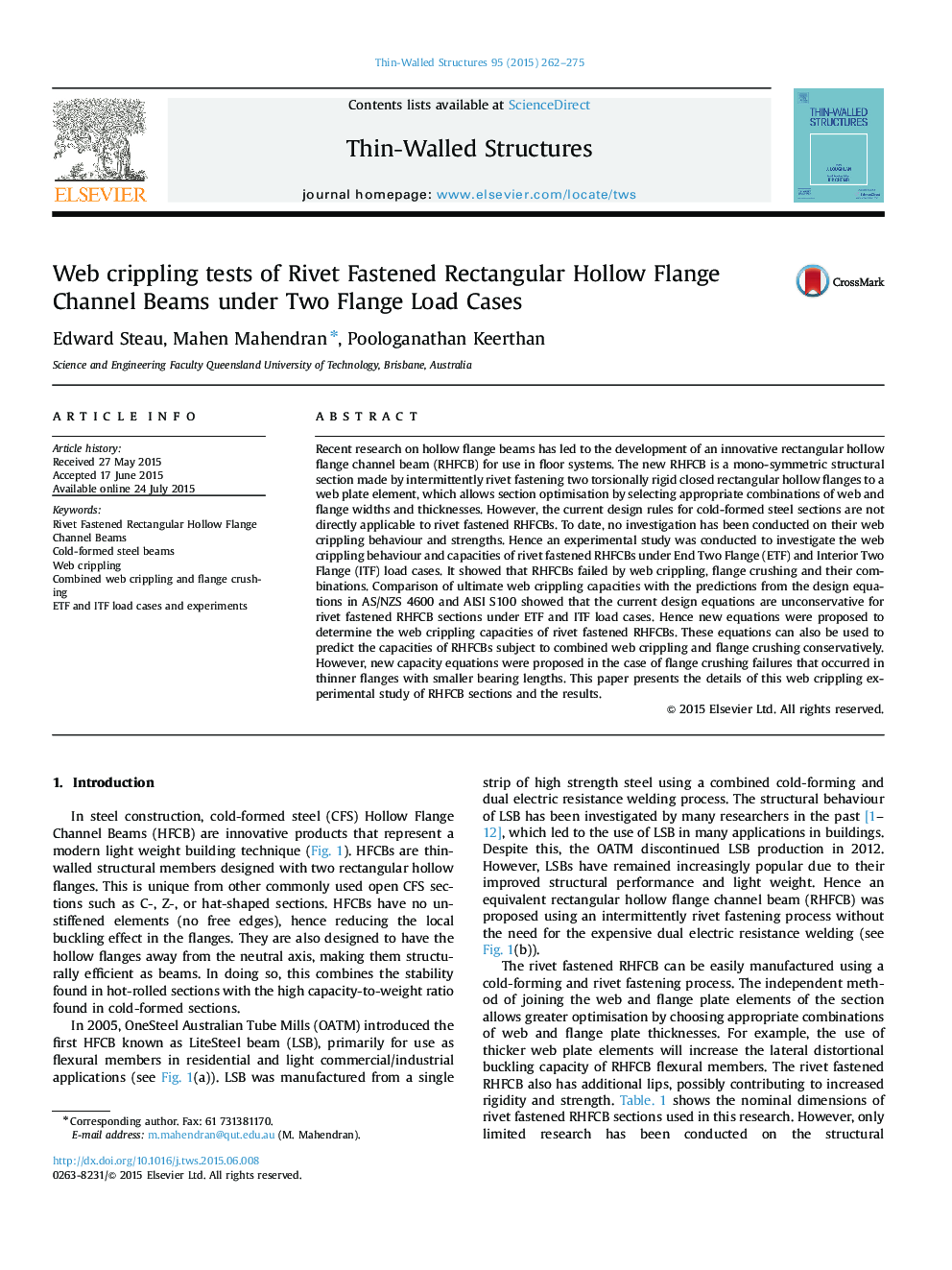| Article ID | Journal | Published Year | Pages | File Type |
|---|---|---|---|---|
| 308701 | Thin-Walled Structures | 2015 | 14 Pages |
•Investigated web crippling behaviour of rivet fastened RHFCBs.•Conducted 52 web crippling tests to determine the ultimate capacities of RHFCBs.•Current Australian and American web crippling design rules are very conservative.•Proposed improved web crippling design rules within current design guidelines.•Developed design rules for combined flange crushing and web crippling failures.
Recent research on hollow flange beams has led to the development of an innovative rectangular hollow flange channel beam (RHFCB) for use in floor systems. The new RHFCB is a mono-symmetric structural section made by intermittently rivet fastening two torsionally rigid closed rectangular hollow flanges to a web plate element, which allows section optimisation by selecting appropriate combinations of web and flange widths and thicknesses. However, the current design rules for cold-formed steel sections are not directly applicable to rivet fastened RHFCBs. To date, no investigation has been conducted on their web crippling behaviour and strengths. Hence an experimental study was conducted to investigate the web crippling behaviour and capacities of rivet fastened RHFCBs under End Two Flange (ETF) and Interior Two Flange (ITF) load cases. It showed that RHFCBs failed by web crippling, flange crushing and their combinations. Comparison of ultimate web crippling capacities with the predictions from the design equations in AS/NZS 4600 and AISI S100 showed that the current design equations are unconservative for rivet fastened RHFCB sections under ETF and ITF load cases. Hence new equations were proposed to determine the web crippling capacities of rivet fastened RHFCBs. These equations can also be used to predict the capacities of RHFCBs subject to combined web crippling and flange crushing conservatively. However, new capacity equations were proposed in the case of flange crushing failures that occurred in thinner flanges with smaller bearing lengths. This paper presents the details of this web crippling experimental study of RHFCB sections and the results.
